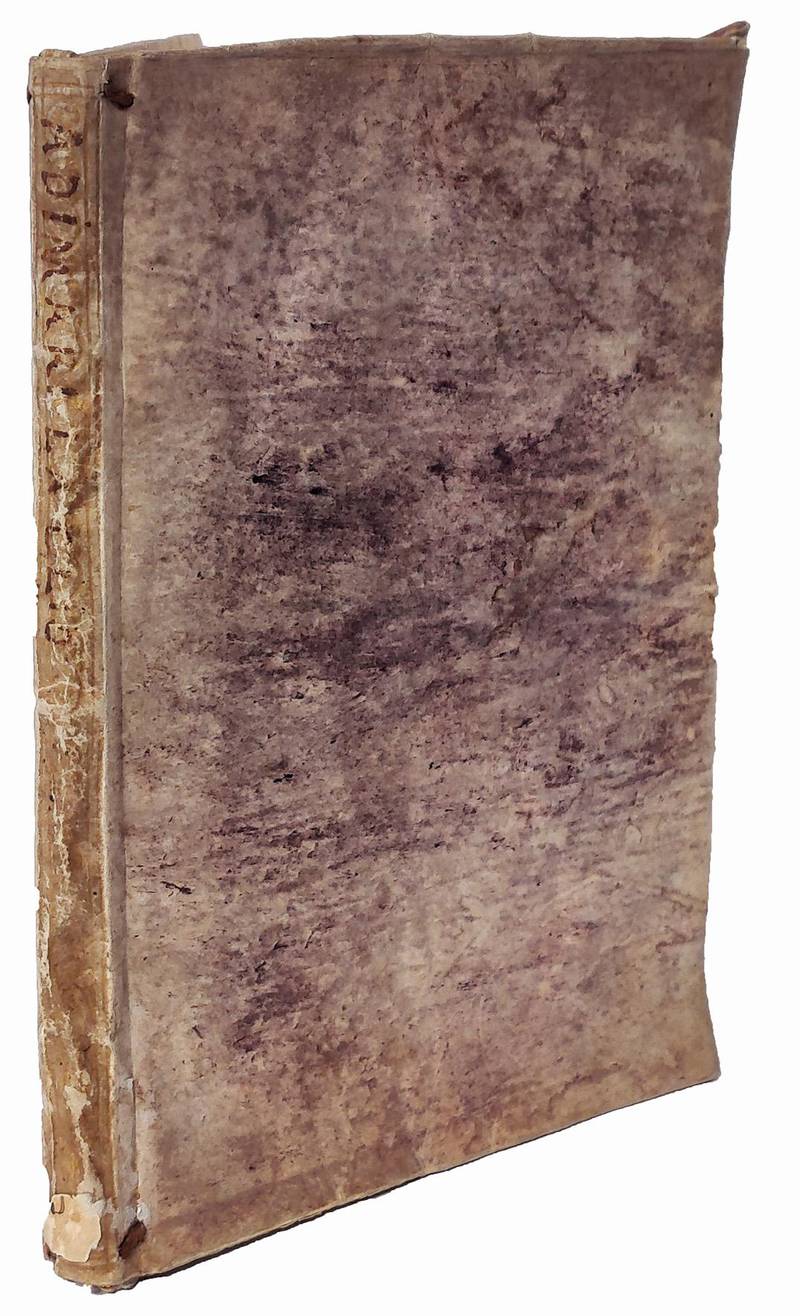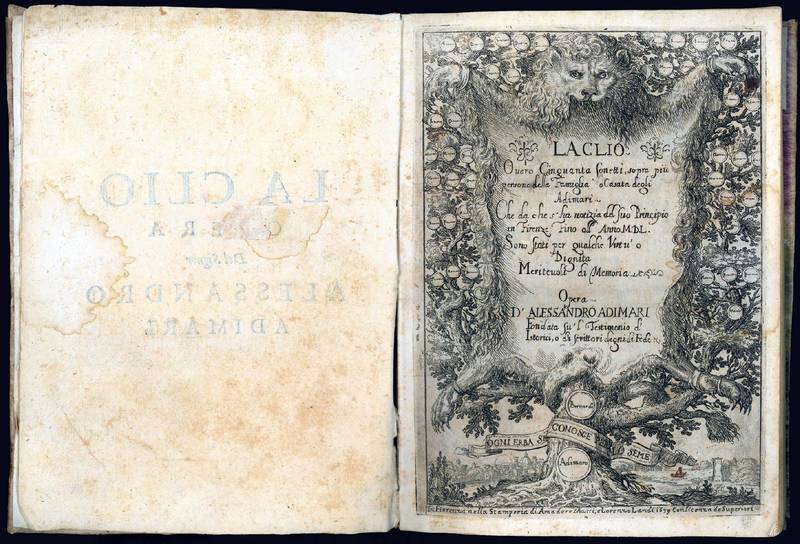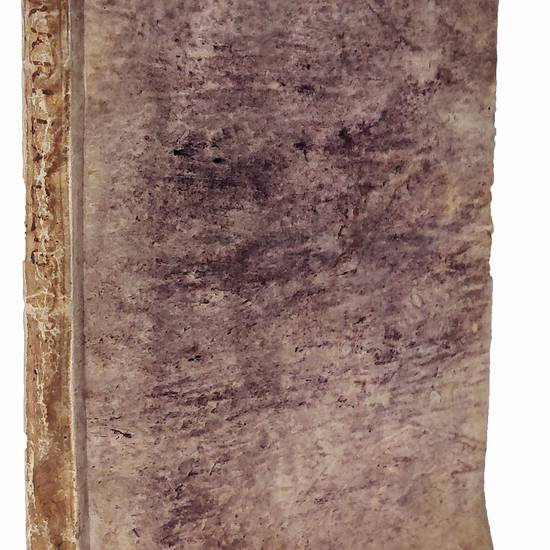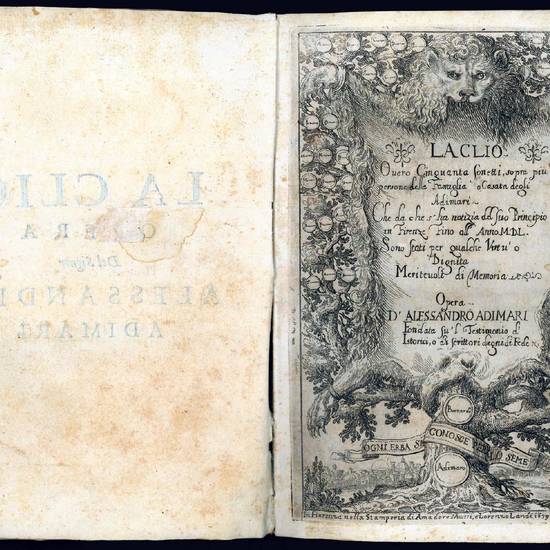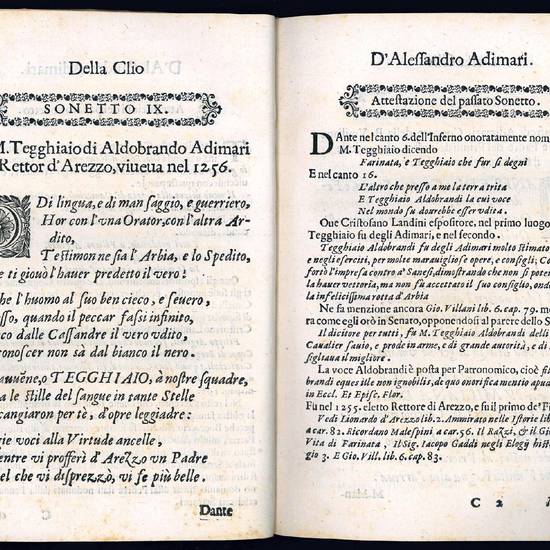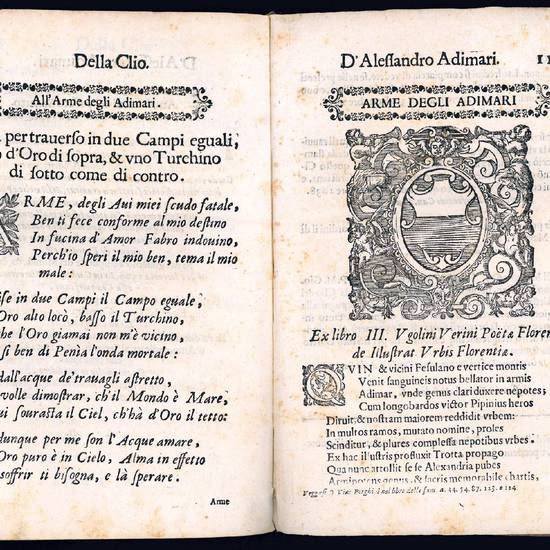La Clio overo Cinquanta sonetti sopra più persone della famiglia o casata degli Adimari che da che s'ha notizia del suo principio in Firenze fino all'anno 1550 sono stati per qualche virtù o dignita meritevoli di memoria. Opera d'Alessandro Adimari fondata su'l testimonio d'istorici, o di scrittori degni di fede
Autore: ADIMARI, Alessandro (1579-1649)
Tipografo: Amadore Massi e Lorenzo Landi
Dati tipografici: Firenze, 1639
In 4to (mm. 209x154). Pp. 120. Segnatura: A-F8 G12. Occhietto, bel frontespizio all'acquaforte che mostra l'albero genealogico degli Adimari con una veduta di Firenze sullo sfondo, stemma degli Adimari inciso in legno a p. 119, iniziali, fregi e frontalini xilografici. Pergamena floscia coeva color porpora (un po' scolorita). Strappo sull'occhietto che comporta una minima perdita di testo, bruniture e fioriture sparse, ma buona copia genuina.
Prima ed unica edizione, dedicata a Caterina Adimari Piccolomini Aragona, di questa raccolta di cinquanta sonetti dedicati ai membri più illustri della casata fiorentina di cui l'autore stesso faceva parte. Ciascun sonetto è accompagnato da un “attestato” in prosa che ne spiega i contenuti. Adimari, traduttore di classici e dallo spagnolo e fervente marinista, compose sei raccolte intitolate alle muse ciascuna comprendente cinquanta sonetti: La Polinnia, La Tersicore, La Clio, La Melpomene, La Calliope e L'Urania.
Piantanida, 2286.
[9595]

